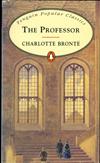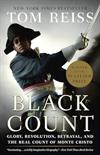
The Professor
by Charlotte Brontë | Literature & Fiction | This book has not been rated.
ISBN: 0140621423 Global Overview for this book
ISBN: 0140621423 Global Overview for this book
2 journalers for this copy...
 Complete and unabridged. First published 1857. Published in Penguin Popular Classics 1995. Penguin Books, London, England. Paperback, 256 pages.
Complete and unabridged. First published 1857. Published in Penguin Popular Classics 1995. Penguin Books, London, England. Paperback, 256 pages.The cover shows a detail from The Hall at Christ Church Oxford, by George Pyne, by courtesy of Chrtstopher Wood Gallery, London (photo: Bridgeman Art Library)
The blurb:
Rejecting his aristocratic inheritance WilIiam Crimsworth goes to Brussels to find his fortune. He takes a job teaching at a boarding school for young ladies, where he begins a flirtation with Zoraïde Reuter, who, out of jealousy, attempts to frustrate his courtship of Frances Henri, an attractive young woman determined to make her way in the world.
In The Professor Charlotte Brontë holds up to scrutiny the Victorian ideals of self-help and individualism. The result is an unusual love story, and a novel profoundly critical of a society in which the relationships between men and women are reduced to power struggles.
About the author and her novel:
BY CHARLOTTE BRONTË
CHARLOTTE BRONTË (1816–55), the most admired of the Brontë sisters in her own lifetime, she was also the most prolific. Her four published novels, which are in part autobiographical, are still widely read today.
Born in Thornton, Yorkshire, in 1816, Charlotte Brontë was the third daughter of Patrick Brontë, a clergyman of Irish descent, and Maria Branwell of Penzance, Cornwall. They moved to Haworth in 1820 when Patrick Brontë was made perpetual curate. After the death of Charlotteʼs mother in 1821, her motherʼs sister, Elizabeth, came to look after the family, and the children, five daughters and one son, were left with a solitary father, a disciplinarian aunt and only each other for company. Taking as their starting point Branwellʼs twelve soldiers and a great deal of reading, they created the fantasy worlds of Angria and Gondal, writing annals and newspapers for these imaginary places. In 1824, the four eldest girls were sent to Cowan Bridge School, which Charlotte re-created as Lowood in Jane Eyre. Its poor conditions hastened the deaths of Maria and Elizabeth (who died from tuberculosis in the same year) and damaged Charlotteʼs health permanently. The time Charlotte spent at her second school, Roehead, between Leeds and Huddersfield, was far happier. Here she made one or two life long friends who appear in various guises in her novels. She later returned as a teacher but gave up the post to set up her own school at Haworth with Emily. To acquire further qualifications the two sisters visited the Pensionnat Héger in Brussels where Charlotte fell hopelessly in love with M. Heger, later satirized in Villette. Her first novel, The Professor, was rejected, but she went on to write Jane Eyre, which is her true claim to greatness. Charlotte refused three offers of marriage but in 1854 she consented to marry her fatherʼs curate, A. B. Nicholls. The marriage, however, was short-lived, for the following year Charlotte died from an illness associated with pregnancy.
The Professor, which was never published in the authorʼs lifetime, was first submitted for publication in 1846. Like Villette it is based on Charlotteʼs experiences in Brussels but is unique among her novels for having a male protagonist. The book was rejected for publication eleven times in total but Charlotte herself never doubted the bookʼs merit and laughingly referred to her feelings for the book as being ʻparalleled by those of a doting parent to an idiot childʼ. It was finally published in 1857 with a prefatory note by her husband A. B. Nicholls.
Readers may also find the following books of interest: Christine Alexander, The Early Writings of Charlotte Brontë (1983); Miriam Allott, The Brontës: The Critical Heritage (1984); Penny Boumelha, Charlotte Brontë (1990); Terry Eagleton, Myths of Power (1975); Elizabeth Gaskell, The Life of Charlotte Brontë (1857; ed. Alan Shelston, 1975); Winifred Gerin, Charlotte Brontë: The Evolution of Genius (1967); Pauline Nestor, Charlotte Brontë (1987); Margot Peters, Unquiet Soul: A Biography of Charlotte Brontë (1975); and T. J. Wise, and J. A. Symington (eds.), The Brontës: Their Lives, Friendships and Correspondences (1932).
Charlotte Brontë at Wikipedia
Charlotte Brontë: A Brief Biography at The Victorian Web
The Professor at Wikipedia
Released 7 yrs ago (8/24/2016 UTC) at Tampere, Pirkanmaa / Birkaland Finland
CONTROLLED RELEASE NOTES:
This August One book a month was won by Olivia_Lo. Congrats and happy reading!
The book is here! Can't wait to read it. Thank you so much for sending it all along to Taiwan, Tarna!













